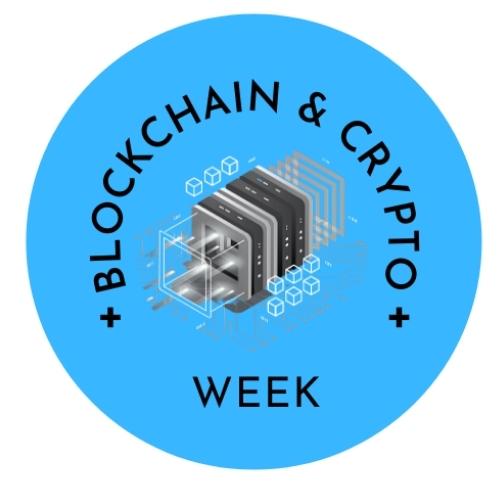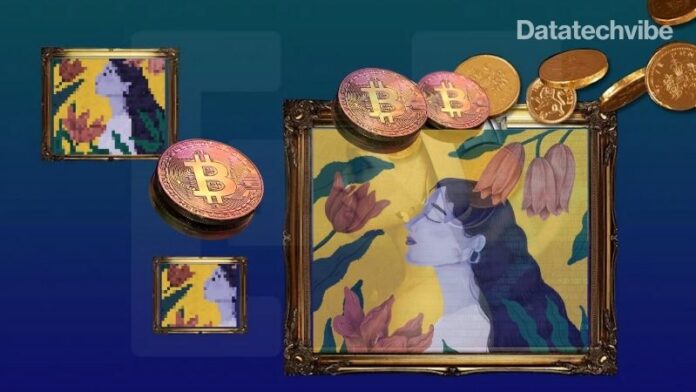From digital artwork to art-powered crypto fashion, the one-of-a-kind blockchain-powered NFTs is getting noticed.
Just recently, Bitcoin was the digital answer to currency, now non-fungible token (NFT) is touted as the digital answer to collectables. Worth a million dollars, blockchain technology, is crucial for creating NFTs, to enable users to create a special kind of crypto asset, one that is unique.
touted as the digital answer to collectables. Worth a million dollars, blockchain technology, is crucial for creating NFTs, to enable users to create a special kind of crypto asset, one that is unique.
In March, shattering every previous record set for the digital artwork and pushing the NFT market into the price range of blue-chip masterworks, a digital artwork was sold at Christie’s auction for an eye-popping $69 million. Everydays: the First 5,000 Days is a mosaic of every image that artist Mike Winkelmann, who goes by the name Beeple, has made since 2013. The artwork is attached to an NFT, which has now become the most expensive NFT ever sold.
The sale was first in a boom in the market for NFTs, a massive shot in the arm for businesses.
Soon after, Jack Dorsey, CEO of Twitter and Square, sold his first tweet as an NFT for over $2.9 million. The bidding ended on the “Valuables” platform, run by Cent, a blockchain-powered social media network. All proceeds from Dorsey’s NFT sale were planned to be converted to bitcoin and donated to GiveDirectly, a charity giving cash to people living in poverty. Early in March, The Kings of Leon became the first band to release an album in an NFT format.
Meanwhile, 3F Music, a Dubai-based multimedia group, is on an NFT buying spree.
It bought the tokenised version of the famous meme, Overly Attached Girlfriend, which was posted by the YouTube star Laina Morris this year and has over 20 million views for a whopping $411,000. Also, it acquired The New York Times’ Kevin Roose’s “Buy this Column on Blockchain!” NFT for $560,000. Expanding its NFT investment, 3F Music’s NFT collection includes a $257,914 image of the multiverse, a $15,000 “emoji portrait” of the musician Billie Eilish $5,157 image of a Byzantine shield by a Lebanese artist, Kristel Bechara.
Also Read: The AI Cyber Attack
What is an NFT?
You can swap a $100 note for two $50 notes with money, and it will have the same value. However, NFT cannot be interchanged with something else. Cryptocurrencies are fungible, each bitcoin is worth the same as every other and is functionally identical to them too. What NFTs do is allow something unique to be registered on a blockchain.
They have no tangible form of their own. They are digital assets, including jpegs and video clips, that can be bought and sold. The digital tokens can be thought of as certificates of ownership.
Clearly, NFTs allow one to do something new regarding the digital world: mark something as the “original”. While every copy of a particular gif or jpeg is identical, there would only be one, or a limited number, of NFT versions of it, creating a concept similar to the real-world one of artists selling an original versus hundreds of prints of it for much less.
Using cryptography to chain blocks into a growing list of records, each block is locked by a cryptographic hash — a string of characters that uniquely identifies a data set — to the previous block. The transaction records of a chain of blocks are stored in a data structure called a Merkle tree. And since they run on blockchain, past records, ownership and validity of each can be tracked. The unique design makes it very difficult to alter transaction data stored in blockchain.
Ethereum blockchain is the basis for most of the currently offered NFTs because it supports the ERC-721 token standard, enabling NFT creators to capture information of relevance to their digital artefacts and store it as tokens on the blockchain.
Coming to prominence in 2017 with a game called CryptoKitties, which enables players to buy limited-edition virtual cats, the value of the total NFT market is estimated at $250 million now, as it increasingly becomes attractive to content creators.
Since CryptoKitties, NFT has been adopted by game developers to create digital shields, swords or similar prizes, and other game collectables, Tokenisation enables transferring tokens between different games or to another player via NFT specialised blockchain marketplaces.
The NFT craze is keeping its momentum going. Obvious, the French art collective behind Portrait of Edmond de Belamy, the first AI-generated artwork ever to sell at auction for a whopping $432,500 in 2018, is making a splash in the red-hot NFT market. Last week, it dropped a trio of newly minted NFT video portraits in collaboration with blue-chip Paris art gallery Kamel Mennour.
The new series, titled ‘Portraying’, was produced with the aid of Generative Adversarial Networks, a machine learning algorithm based on a data set of 16,000 portraits from art history. But this time around, the collective used a newer StyleGAN 2 algorithm and created an animated version of the AI portrait. Each piece is being sold as an NFT in an edition of one on the NFT platform SuperRare.
Artists are drawn to the NFT technology for its democratising nature. Anyone can log on and purchase the goods. An NFT does identify what artwork, code, audio or video it links to and the history of its trading. So, an NFT artefact created by the artist is the same as owning the art.
Last year, after several of his in-person shows were cancelled due to the Covid-19 pandemic, Kevin Abosch, an Irish conceptual artist and pioneer in cryptoart, started working on a series of images tackled themes of cryptography and alphanumeric codes. He saw it as the perfect opportunity to sell his work as NFTs on OpenSea, the largest marketplace for the tokens, which sees 1.5 million weekly visitors and facilitated $95million in sales in February 2021 alone. Abosch made a profit of $2million from the series.
Also Read: The Blockchain Backstory
While TIME Magazine and the Associated Press also experimented with selling NFTs, it is now frequently used to sell a wide range of virtual collectables, including NBA virtual trading cards, music, and even real estate in Decentraland, a virtual world. deadmau5 has sold digitally animated stickers. Fans bought 125,000 non-fungible token trading cards featuring Star Trek’s William Shatner, the actor best known as Captain Kirk of the USS Enterprise, on the WAX Blockchain.
NFT could be the future of art-powered crypto fashion as well. Italian designer Angelo Galasso produced a range of NFT wallets, backpacks and keychains, in collaboration with the artist Lee Robinson. Gucci created the Virtual 25, which is a pair of virtual neon green and pink trainers made to be worn in the virtual world.
Last week, an NFT hoodie was sold for $26,283. The black hoodie from the streetwear fashion label Overpriced, emblazoned with an expletive-laden logo in neon green graffiti font, was sold on the digital art marketplace Blockparty.co to an anonymous bidder who, through scanning a code, can now “wear” the garment in virtual settings online.
The transformation of blockchain into a newer variant has accelerated a digital economic innovation trend, with people embracing new business possibilities, an exciting outlet for speculative money. Although experts say, in the future, they could be used to prove ownership source code or something similar, with appropriate frameworks, to track digital rights ownership properly, if their reputation can survive the initial hoopla.









